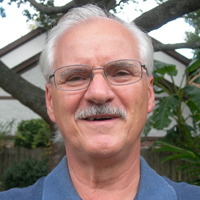The Deep History of Life
What kinds of life characterized the Earth during the Precambrian?
What kinds of life characterized the Earth during the Precambrian?
The University of Kentucky Board of Trustees today accepted nearly $6.5 million in gifts and pledges, with a sizable portion directed toward two A&S departments.
The Gospel of Matthew records a peculiar astronomical event that occurred at the birth of Christ. Could the “Christmas Star” have been a nova, a supernova, a comet, or some other spectacular sight? I will talk about what was visible around the time of the birth of Christ, and describe Kepler's idea that that the Star was a planet alignment that guided the “wise men from the East.”
Watershed processes and environmental change: how future variations in land cover, atomospheric deposition, and climate could affect hydrology and pollutants?
Title: Informatics and Modeling Platform for Stable Isotope-Resolve Metabolomics
Abstract: Recent advances in stable isotope-resolved metabolomics (SIRM) are enabling orders-of-magnitude increase in the number of observable metabolic traits (a metabolic phenotype) for a given organism or community of organisms. Analytical experiments that take only a few minutes to perform can detect stable isotope-labeled variants of thousands of metabolites. Thus, unique metabolic phenotypes may be observable for almost all significant biological states, biological processes, and perturbations. Currently, the major bottleneck is the lack of data analysis that can properly organize and interpret this mountain of phenotypic data as highly insightful biochemical and biological information for a wide range of biological research applications. To address this limitation, we are developing bioinformatic, biostatistical, and systems biochemical tools, implemented in an integrated data analysis platform, that will directly model metabolic networks as complex inverse problems that are optimized and verified by experimental metabolomics data. This integrated data analysis platform will enable a broad application of SIRM from the discovery of specific metabolic phenotypes representing biological states of interest to a mechanism-based understanding of a wide range of biological processes with particular metabolic phenotypes.
 One of the oldest traditions in the Department of Earth & Environmental Sciences is its Geology Field Camp. Those who have been a part of this tradition never forget their experiences, the bonds they formed, or what they learned.
One of the oldest traditions in the Department of Earth & Environmental Sciences is its Geology Field Camp. Those who have been a part of this tradition never forget their experiences, the bonds they formed, or what they learned.  One of the oldest traditions in the Department of Earth & Environmental Sciences is its Geology Field Camp. Those who have been a part of this tradition never forget their experiences, the bonds they formed, or what they learned.
One of the oldest traditions in the Department of Earth & Environmental Sciences is its Geology Field Camp. Those who have been a part of this tradition never forget their experiences, the bonds they formed, or what they learned. Title: Some progresses on two-dimensional Riemann problems in gas dynamics
Abstract: Two dimensional Riemann problems for compressible fluid flows assume the simplest piecewise sectorial initial state but provide the most fundamental wave configurations, including the reflection of oblique shocks and vortex-shock interaction etc. In this talk I will show many fascinating pictures, based on 2D Riemann solutions, to disclose the mysteries of compressible fluid world both through analytical tools (in the form of mathematical theorems) and computational techniques (in the form of simulations). The analysis is based on the characteristic decomposition theory we developed recently, while the simulations are obtained using the generalized Riemann problem (GRP) scheme that is equipped with a highly accurate solver in the construction of numerical fluxes by a way of tracking singularities analytically and keeping entropy exactly computed.
In their ongoing quest to develop the latest and most effective drugs for disease treatment, researchers in the University of Kentucky's Center for Pharmaceutical Research and Innovation are looking deep — as in, deep underground.
Earth and Environmental Sciences alumni gather for a field camp reunion in the Rocky Mountains.